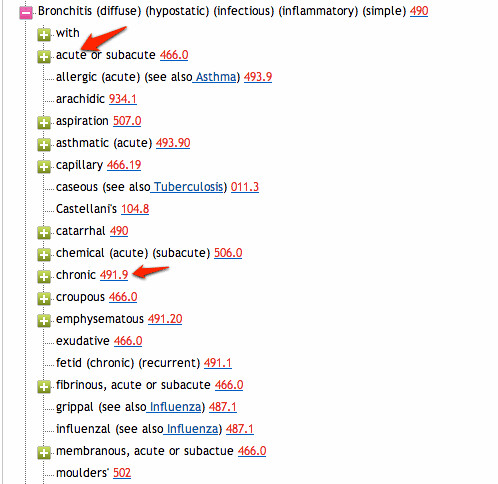Laureen
Queen Instructor
Staff member
Administrator
Moderator
Blitzer
PBC Student (CPC®)
CCO Club Member
CCO Support Staff
MTA Student
ICD-10-CM Student
PPM Student (CPPM®)
FBC Student (CPC-H®)
Question from Facebook Discussion Group:
Just wanna clarify this. What if the patient has diagnosed by 491.0 and 466.0 which one will be the primary code?
Ok first the codes courtesy of supercoder:

The official ICD-9 guidelines say
In looking up bronchitis in the index we see that acute and chronic are both listed as sub-terms at same level so we are good to code both.

And this is from the Coding Clinic:
Just wanna clarify this. What if the patient has diagnosed by 491.0 and 466.0 which one will be the primary code?
Ok first the codes courtesy of supercoder:

The official ICD-9 guidelines say
10. Acute and Chronic Conditions
If the same condition is described as both acute (subacute) and chronic, and
separate subentries exist in the Alphabetic Index at the same indentation level,
code both and sequence the acute (subacute) code first.
In looking up bronchitis in the index we see that acute and chronic are both listed as sub-terms at same level so we are good to code both.

And this is from the Coding Clinic:
So in your case the acute would be sequenced first.Acute and Chronic Condition
When a particular condition is described as both acute or subacute and chronic, code according to the Alphabetic Index subentries (including those enclosed in parentheses) for that condition, such as:
· Whenever separate subentries for acute (subacute) and chronic are listed, code both and sequence the acute condition first.
· When there are no subentries for acute (subacute) or chronic, disregard these modifiers in coding the particular condition.
· When the Index does not provide a subentry for a condition described as subacute, code the condition as acute.
